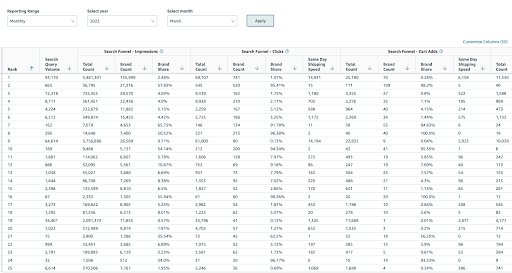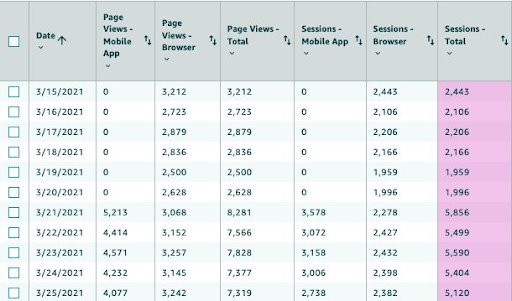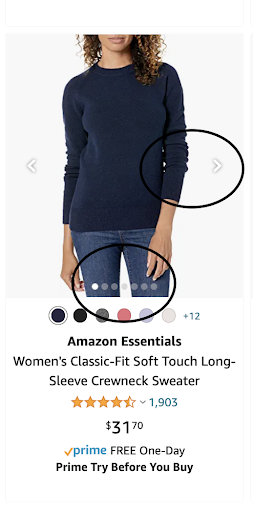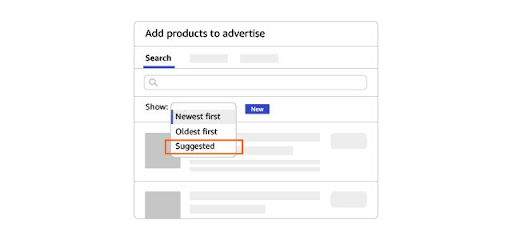RESOURCES
Q1 2022 Recap: Amazon Features and Updates
Every month brings new changes to Amazon. For sellers and brands, it can be hard to keep up, but every update to the marketplace ecosystem is vital to become familiar with. Code3 has you covered - we’ve compiled many of the new features and updates that occurred on Amazon in the first quarter of 2022. Read on to learn more about what’s new and changing on Amazon and within the retail ecosystem.
Likely the most headline-garnering news from Amazon in late Q1 was the news that a 5% fuel and inflation surcharge will be applied to all US FBA fulfillment fees. The additional fee began on April 28 and should come as no surprise as Amazon is also feeling the brunt of increasing supply chain costs. However, it’s important to note that the increase is just on one individual fee, the “Fulfillment Fee,” not on the Total Fees for an item.
For example, if a Fulfillment Fee is currently $5.14, a typical amount for a small to medium size item, with the increase, the fee is now $5.40, only a 26-cent difference. While it will certainly impact a brand's bottom line, it’s not as large of an increase as many may assume.
Right now, it's more important than ever for a brand to intimately understand item-level profitability, ensure they are doing everything to increase conversion rates, and make continued advertising optimizations to find more efficiencies.
Amazon Reporting: Updates to Search Analytics on Seller Central
The first new Dashboard, the Search Catalog Performance Dashboard, is designed to help brands understand their sales funnel at the product level and offers insights into how shoppers interact with their products. The Dashboard, only available for brands on Seller Central, provides metrics and insights including impressions, price, clicks, click rate, cart adds, cart add rate, purchases, and conversion rate. Brands can access the data via Brand Analytics, and utilize it to pinpoint conversion issues such as identifying drop-off points, better optimize listings, inform inventory planning, develop pricing strategy, and grow overall Amazon business.
When looking at the dashboard, each row of the report will represent the performance of an ASIN in a brand’s catalog, aggregated across all queries, for a selected time period. Keep in mind, each metric value includes organic and Sponsored Products originating from the search results page for all customers. The report excludes traffic from widgets on the search page such as “Top Rated” or “New Arrivals.”
Additionally, the Seller Central Search Query Performance Dashboard has been rolled out and provides visibility into a brand’s search term’s performance based on shoppers’ search behavior. Metrics that can be viewed include search displays, clicks, adds to cart, and purchases, for the top search terms of your catalog or ASIN. It’s important to note purchases and sales metrics may not match total counts from sales reports, as the metrics in the Search Query Performance Dashboard include sales originating from the search results page, excluding widgets, detail pages, and more.
The new dashboard can prove to be extremely valuable for brands, offering insight into the top driving keywords at the brand level. A spot check to ensure these keywords are utilized within search advertising strategy and throughout PDP content and imagery will be beneficial. Brands can also use these metrics to expand upon their keyword strategy, incorporating similar keywords to what they’re already ranking for.

Additionally, Amazon has now included the ability to view page views and sessions on mobile app vs. browser in their Business Reports section of Seller Central. This data is only showing beginning when the feature was added on March 21, and only appears for traffic metrics, not sales.

Amazon PDP Updates
It’s no secret Amazon tests different elements of the PDP from time to time, big and small. An eagle-eyed Code3 Strategist recently noted Amazon testing “Buy it with” phrasing instead of the traditional “Frequently Bought Together.”

Amazon is also testing “Shareable” product images on desktop, allowing consumers to quickly and easily share the images with friends and family through email or social media.

Great product imagery has always been important for the PDP page, but now it’s also important for the search results page. Amazon has added the ability for consumers to browse a product image set from the search results page.

Amazon Catalog Updates
Last year, Amazon announced a new required attribute in Vendor Central for Radio Frequency Devices; now they are beginning to enforce the policy. As of March 7, Amazon began removing ASINs that are missing the required Federal Communications Commission (FCC) information.
A wide variety of brands may be affected by this required attribute, as the FCC defines Radio Frequency Devices as any electronic or electrical product that is capable of emitting radio frequency energy and can include WiFi devices, Bluetooth devices, radios, broadcast transmitters, signal boosters, and devices with cellular technology.
It’s critical to proactively provide Amazon with any FCC compliance information, to stop any future ASIN suppressions. This can include evidence of FCC authorization that consists of either an FCC certification number or contact information for the Responsible Party as defined by the FCC. It can also include a declaration that the product is not capable of emitting radio frequency energy, or is not required to obtain an FCC RF equipment authorization.
Amazon’s Vine program, which helps brands to generate reviews from a group of customers selected by Amazon, has increased the number of ASIN enrollments. Previously, only 5 ASINs could be enrolled in the program, but now brands in Seller and Vendor Central can enroll 60 ASINs.

Amazon Search Updates
In March, Amazon made an update to their Sponsored Display bid recommendations, expanding them to vCPM (viewable CPM-based) campaigns. Now, when any CPC or vCPM-based Sponsored Display product targeting or views remarketing campaign is launched, bid recommendations are available by default. The recommendations can be found in the Amazon Advertising console.
Amazon also made a minor adjustment to Sponsored Products campaigns, introducing “suggested products sort option.” Using this option when selecting products for a campaign will offer Amazon recommendations on which products are likely to get clicks.

The marketplace ecosystem is complex and ever-changing. If you could use a strategic partner to help you keep up on the changes that impact you the most, contact us today.
SIGN UP FOR OUR WEEKLY NEWSLETTER

News, Views, and Valuable Resources
Delivered to Your Inbox Each Week



